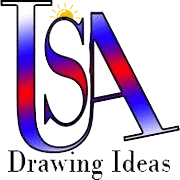Introduction
Jet drawing is a completely exhilarating and dynamic artistic work that licenses you to get the smooth areas of strength for and of these flying machines. Whether you're an air transportation devotee or basically intrigued by making workmanship that joins precision and energy, this step-by-step guide will help you with passing on your outing to becoming astounding at jet drawing.
Materials You'll Need:
Before we plunge into the means, we should accumulate the fundamental materials:
Paper: Select a decent quality attracting paper or sketchbook to give a solid surface to your work of art.
Pencils: You'll require a scope of pencils (HB, 2B, 4B, and so on) to make various shades and profundities in your drawing.
Eraser: A decent quality eraser will prove to be useful for rectifications and calibrating your work.
Reference Picture: Find a reasonable picture of a jet that rouses you. You can involve a photo or an itemized outline as a source of perspective.
Stage 1: Essential Blueprint
Start by delicately drawing the fundamental blueprint of the jet. Begin with basic shapes and lines to catch the general shape and extents. Focus on the wings, fuselage, tail, and other key parts.
Stage 2: Characterize the Subtleties
Presently, center around adding the better subtleties of the jet. Take a gander at your reference picture intently and begin drawing the different parts like the cockpit, motors, landing gear, and some other particular highlights.
Stage 3: Concealing
Concealing is where your attracting truly becomes fully awake. Utilize a scope of pencils to add profundity and aspect to your jet. Focus on the wellspring of light in your reference picture, and shade as needs be. The regions that are nearer to the light source ought to be lighter, while those in shadow ought to be more obscure.
Stage 4: Features and Reflections
To make yourjet drawing pop, add features and reflections. These can be made by leaving specific region of your drawing white or utilizing an eraser to eliminate pencil marks. Feature the sparkly surfaces of the jet, for example, the cockpit glass, motor depletes, and metal surfaces getting the light.
Stage 5: Background
To upgrade the general structure of your jet drawing, consider adding a foundation. It very well may be an unmistakable blue sky, a runway, or an emotional flying scene. Ensure the foundation supplements the fundamental subject without overwhelming it.
Stage 6: Calibrating and Subtleties
Make a stride back and view at your drawing all in all. Focus on balance, viewpoint, and extents. Utilize your eraser to make remedies depending on the situation.
Note: After learning this tutorial visit more Drawing ideas.
Stage 7: final touches
In this step, add any extra subtleties that will provide your jet drawing with a feeling of authenticity. This could incorporate board lines, bolts, or symbols. Ensure these subtleties line up with your reference picture.
Stage 8: Sign Your Work
Remember to sign your drawing. It's a little however significant method for guaranteeing your creation and invest wholeheartedly in your work of art.
Conclusion:
Jet drawing is a fabulous method for consolidating your enthusiasm for flight with your creative abilities. With persistence, practice, and tender loving care, you can make shocking drawings that catch the pith of these extraordinary flying machines. Recall that careful discipline brings about promising results, so continue leveling up your abilities and trying different things with various strategies to work on your jet drawings. Thus, snatch your materials, find a reference picture that moves you, and take off on your imaginative excursion!
Your Tutorial is complete.









0 Comments